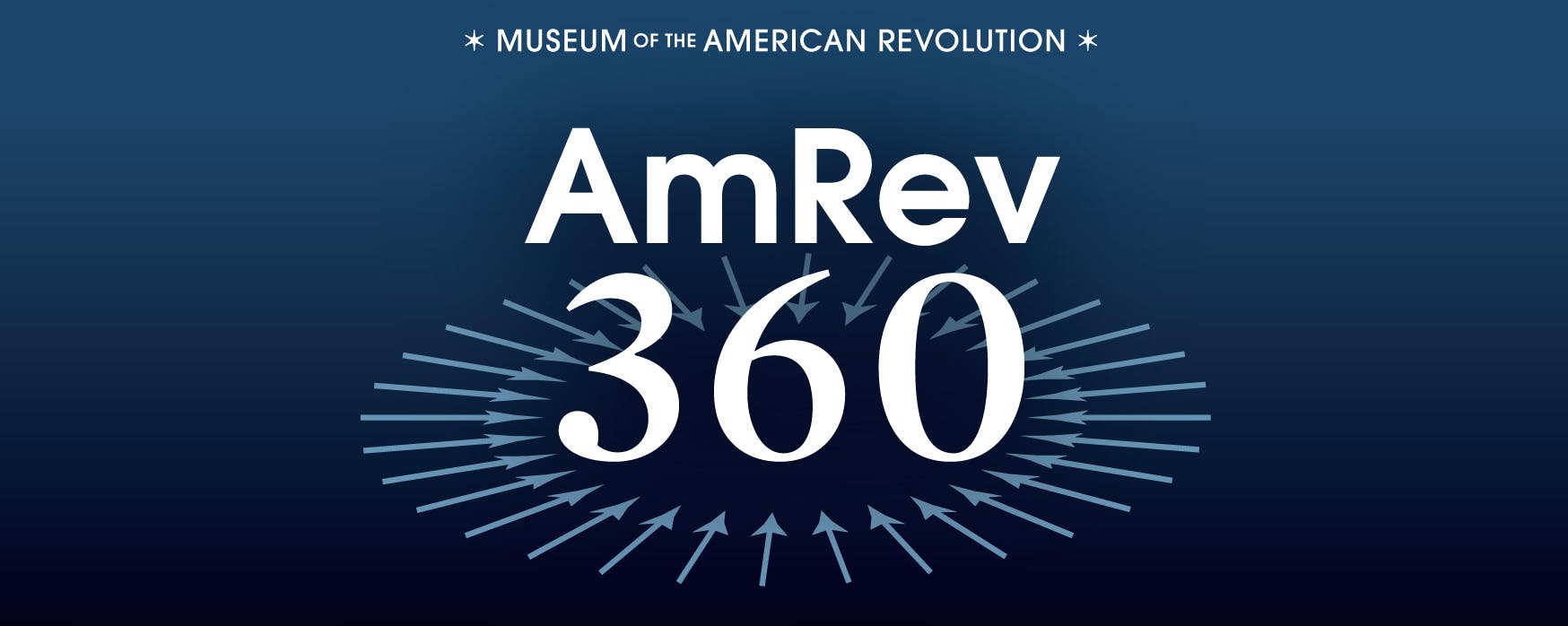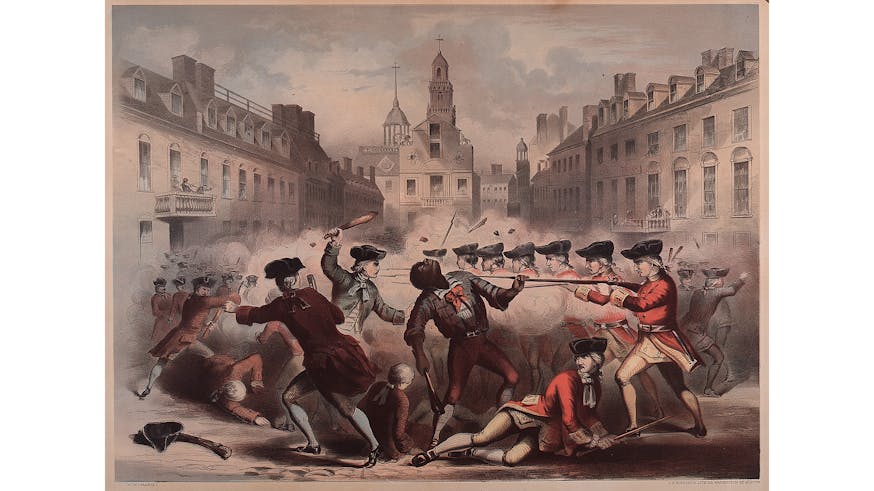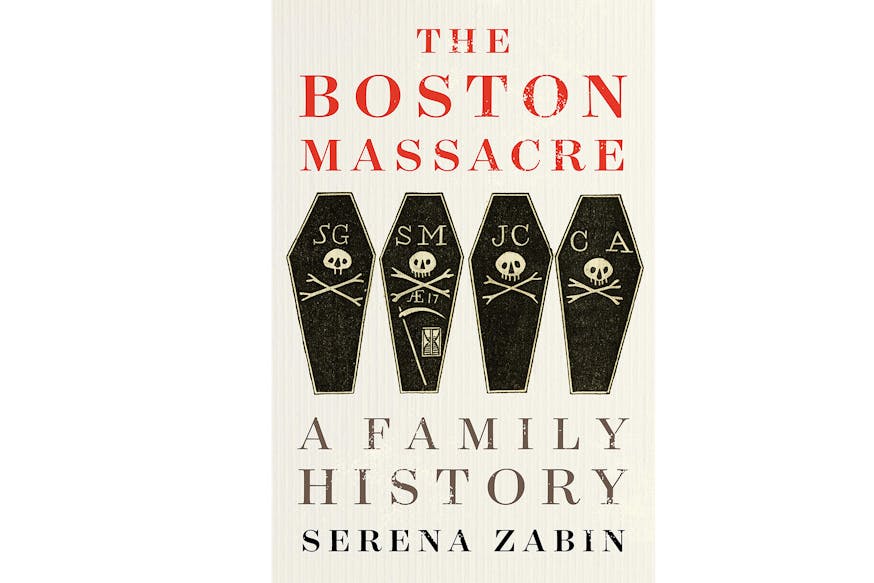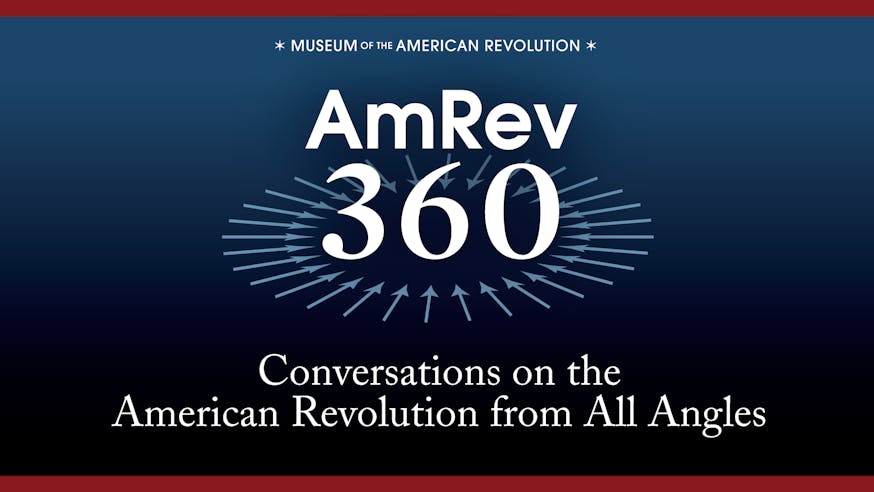
AmRev360
AmRev360: The Boston Massacre 250th and Teaching with Digital History
June 23, 2020On March 5, 1770, British soldiers killed five Bostonians in what became known as the Boston Massacre, one of the crucial moments that led to the Revolutionary War. Dr. Serena Zabin explores the human relationships behind the clash in her new book, The Boston Massacre: A Family History, and as the subject of a video game Witness to the Revolution currently under development in collaboration with co-designer Dr. Austin Mason and students at Carleton College in Northfield, Minnesota.
For a sneak peek of the game, explore the reconstructed streets of Boston, Massachusetts, to meet Thomas Wilkinson and Jane Whitehouse in this version of Witness to the Revolution.
Watch an interview with Dr. Zabin and the Carleton College team behind the Witness to the Revolution video game project on this episode of AmRev360 hosted by Museum President & CEO Dr. R. Scott Stephenson. Then, read Dr. Zabin's reflection on the project below.
---
By Dr. Serena Zabin, Carleton College
What happens when two historians walk into a digitally reconstructed bar? It turns out to be much more fun than you’d think. Certainly, reconstructing the taverns, streets, and homes of eighteenth-century Boston has been much more fun – and much more revealing – than I, a very traditionally trained historian, could ever have imagined.
In the winter of 2012, I was deep into my research on military families and their connection to the Boston Massacre. Looking through church records, I had discovered that many Boston civilians had become part of the British army through marriage, parenthood, and especially by becoming godparents to newborns. I wondered how these civilian and military communities had come to know each other well enough to become parts of the same family. So that winter, I hired three students to try to create a map of Boston that could show us where military and civilian families lived. I worked with undergraduates, both in class and as research assistants, on the map for another year, plotting homes, the routes that Bostonians took to see the shooting on the night of March 5, and every tavern that got a liquor license. As we added more and more data to the map, however, the students became less and less satisfied.
They were troubled by two problems. First, the students knew perfectly well how much analysis, hypothesis, and best-guessing went into every dot and line that they plotted. But once those marks were on the map, they seemed certain and definite. The process of doing history had gotten lost in the result. Second, they had become suspicious of the bird’s-eye view. The great challenge of explaining the Boston Massacre is the confused and contradictory eyewitness evidence. We wanted to know what eyewitnesses could actually see, and so we turned to trying to recreate our map in three dimensions.
Technically speaking, creating a three-dimensional world is many orders of magnitude more difficult than our two-dimensional maps. We turned quickly to a colleague, Professor Austin Mason, who is both a medieval historian and a digital humanist. Once the students saw what we could do with a three-dimensional world, it took only a moment before they began to imagine turning it into a video game.

We realized that a video game could actually solve the two problems that we had identified with our original map. We took an actual investigation into the Boston Massacre and made that the heart of the game. On the day after British soldiers shot civilians in the center of Boston, the Boston Town Meeting appointed a committee to take depositions from those who had witnessed the shooting – or the behavior of soldiers before the violence began. Members of the committee sought out both men and women and asked them for their recollections. Witness to the Revolution asks its players to join this committee and interview witnesses to try to make sense of the shooting. Rather than seeking for the unrecoverable historical truth, however, this quest game demands that the player sort through the confusing evidence and assess the varied value of historical and eyewitness evidence.
Over the next several years, Austin and I enlisted students from history, computer science, and theater to help us turn this vision into a reality – or at least a draft of a game. We were fortunate to attract students like Max Bremer who were willing to apply their computer science knowledge to approaching history. He writes, "I’ve been excited about game development since I was a kid. However, it also scared me with its focus on history […].As time went on, this fear was mitigated to a greater and greater extent. […] through my work with the Sources team on implementing Annotations correctly, I was able to learn about what several historically significant Boston buildings through the lens of work on the game Assets."
Members of the mapping team created an interactive and engaging map of Boston that the player could use for navigation. They designed a legend, integrated mapping data with historical content, and added basic user interface features such as pan/zoom and map icons.
We started by expanding the map into three dimensions with the help of a product called CityEngine, and from there, we imported it into the video game platform Unity. Students interested in historical research documented the appearance and use of buildings and streets, as you can see in this Storymap some of them created last spring.
As one student who worked on the Storymap noted: "Being involved with Witness to the Revolution has been such an important part of my undergraduate career. I first got involved with the project the spring of my freshman year, and then came back to the project my senior year, working both times with the historical information that underpins the game. Through this project, not only have I learned about the Boston Massacre, but also about project management, collaboration across disciplines, digital tools like ArcGIS, and working both individually and as a team. It has been fascinating to try to find the balance between imparting historical information and design, instruction and fun. It has also inspired some of my other academic and co-curricular interests at Carleton, such as making history accessible and engaging and digital humanities, both of which I hope to continue."
Lydia Symchych, who was particularly dedicated to the Witness to the Revolution project, spent a summer turning eyewitness depositions into conversations, as you can see from this sample (unvoiced) playthrough, featuring Newton Prince as one of many characters in this game.
And other students taught themselves how to create game mechanics and user interfaces.
As a teacher, this has been one of the most satisfying teaching experiences I’ve ever had. Even more exciting is our partnership with Revolutionary Spaces, the historical society in Massachusetts that oversees the Old State House (the site of the Boston Massacre) and Old South Meeting House (the site of the Tea Party meeting). As we work with them to figure out how to bring this game to the hundreds of thousands of people who walk the Freedom Trail, our students have risen to the challenge of producing historical work for an enormous public audience.
Certainly, it’s not all smooth going. It’s still going to be a few years before players can wander around the entire Boston peninsula. We have tons of art left to create, too. But as a way of bringing my research to life, it’s been an awful lot of fun.
By Dr. Serena Zabin, Carleton College
Learn More

Boston Massacre and Propaganda: Changing Depictions of Crispus Attucks

The Boston Massacre
